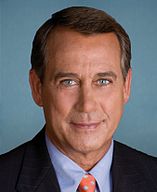United States House of Representatives elections, 2010
|
|
|||||||||||||||||||||||||||||||||||||||||||||||||||
|
|||||||||||||||||||||||||||||||||||||||||||||||||||
|
|||||||||||||||||||||||||||||||||||||||||||||||||||
|
|
|||||||||||||||||||||||||||||||||||||||||||||||||||
|
Results:
Democratic hold
Democratic gain
Republican hold
Republican gain
|
|||||||||||||||||||||||||||||||||||||||||||||||||||
|
|||||||||||||||||||||||||||||||||||||||||||||||||||
The 2010 United States House of Representatives elections were held on November 2, 2010, as part of the 2010 midterm elections (along with Senate elections), at the midpoint of President Barack Obama's first term in office. Voters of the 50 U.S. states chose 435 U.S. Representatives. Voters of the U.S. territories, commonwealths, and the District of Columbia chose their non-voting delegates.
Republicans regained control of the chamber they had lost in the 2006 midterm elections, picking up a net total of 63 seats and erasing the gains Democrats made in 2006 and 2008. Although the sitting U.S. President's party usually loses seats in a midterm election, the 2010 election resulted in the highest loss of a party in a House midterm election since 1938, and the largest House swing since 1948. This also happened to be the Republicans' largest gain in House seats since 1938. Republicans gained the most in New York state where they picked up six seats, defeating five incumbents and winning an open Democratic district. The heavy Democratic Party losses were attributed to anger with President Obama, opposition to the Affordable Care Act, large budget deficits and the weak economy. This was also the third consecutive midterm election in a president's first term where the Republican Party has made gains in the House of Representatives, as well as the second consecutive midterm election where party control of the said chamber changed hands.
...
Wikipedia



